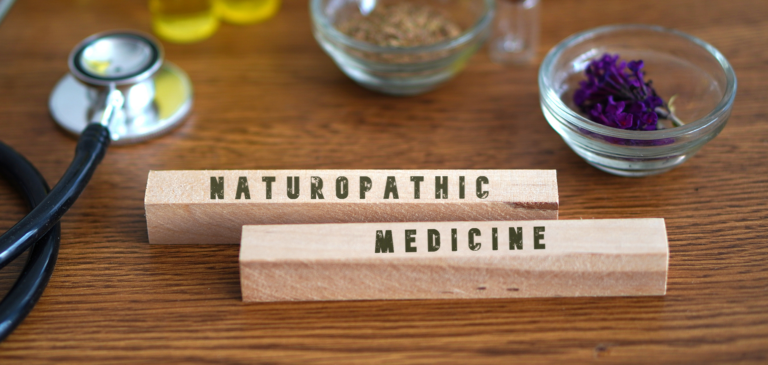The Promise of Metabolic Correction
The Promise of Metabolic Correction
Biochemistry is an ever-evolving science that reveals insight into how the body works. It describes intricate human physiology and suggests utilizing various mechanisms to understand and correct potential issues within the body.
The Healthy State
The World Health Organization defines health as a “state of complete physical, mental and social well-being and not merely the absence of disease or infirmity.” Just because a person isn’t sick, it doesn’t mean that the person is healthy.
Medically-defined health is a real, objective, measurable state which the body can, and should be, occupying more often than not. However, entering and maintaining the “Healthy State” requires commitment, discipline, and careful consideration of a few key best practices. The prize is a body that functions at peak capacity. But it’s not an easy fight.
In a 2018 article published by the Journal of Orthomolecular Medicine, co-authors Michael J. Gonzalez, Jose Olalde, Jose R. Rodriguez, Diana Rodriguez, and Jorge Duconage explain what the healthy state is:
“The healthy state is a physiological status of balance in which the cells are functioning with all their physiologic capabilities. For this to happen, the cell needs all the necessary fluids, electrolytes, macromolecules, micronutrients, enzymes and cofactors to allow life-sustaining functions to proceed in a balanced, dynamic fashion.”
“A true healthy state facilitates and promotes energy production, formation of structures, tissue growth and repair, cell differentiation, production of all the necessary chemicals (hormones and neurotransmitters, cytokines, growth factors) in a delicate dynamic balance and proper detoxification.”
To simplify, the authors state that the core attribute of objective human health is balance, while disease, illness, and injury occur in the presence of imbalance.
Diabetics are constantly trying to create equilibrium between insulin and glucose. The rapidly-reproducing cells of cancer patients overwhelm organic immune systems. Even orthopedic injuries like fractures or breaks occur when the strength of a bone is outmatched by the force applied to it. Human bodies are highly complex machines comprised of hundreds of systems and subsystems that all need to function in perfect harmony with each other and the environment. It is not an easy task.
The good news, however, is that research shows what balance looks like. And research shows how to achieve it.
The study explains:
“It has been estimated that 37.2 trillion human cells make up the human body…We do not need 100% of them working at 100% capability to have optimal health, but we need most of them working at high levels in order to attain the healthy state.”
Oxygen, water, amino acids, fatty acids, sugars, vitamins, minerals, and trace elements are needed for the myriad biochemical reactions taking place in each cell. Cellular health is based on a synergistic combination of nutrients in the necessary quantity (dose) and quality (form) received with the necessary frequency needed to help maintain this continuum. Although the precise amount needed by each individual varies, a conscious diet and judicious supplementation are necessary to attain this goal.
Functional balance in the body can be measured, tracked and unlocked. On a cellular level, we know which fluids, enzymes and other life-giving compounds are required to both achieve and maintain the healthy state. The trick, however, is introducing those compounds while simultaneously avoiding the toxins and destructive environmental factors that create disharmony within the human machine.
The Pathological State
Health is a spectrum. On the left, there is the “Healthy State.” The “Pathological State” is the exact opposite of the healthy state. The healthy state is balance. The pathological state is chaos. In the healthy state, every cell is optimized, and every process is efficient. In the pathological state, cells are damaged and processes begin to head off the rails.
Right now, humans all exist somewhere on this scale. Very few are all the way to the left or all the way to the right. To truly be healthy, the goal cannot be to avoid obesity and disease. It has to be a constant, everyday effort to move left. Even Olympic athletes can still move further left, and even the chronically or incurably ill can escape the tyranny of the right.
But humans can only do this by accurately understanding and efficiently responding to the environment. According to the study:
“It is therefore necessary to understand the dynamics of the Health–Pathology Gradient Continuum. This concept can be expanded to involve all the dimensions of human existence (physical, mental, emotional, social, ecological, economic and spiritual) and the balance and harmony among all those components within the set of values of the person, its society and its environment.”
Epigenetics and Metabolic Correction
Metabolism is the sum of all the enzyme-facilitated biochemical reactions that occur in the body and which are needed to sustain life. Metabolic correction is a biochemical/physiological concept that explains how improvements in cellular biochemistry help the body achieve metabolic or physiological optimization.
This three-step therapeutic process must include:
- Improvements in lifestyle which include moving and exercising in a personalized and appropriate manner, achieving optimal sleep for immune and neuro-support, and managing stress or addressing allostatic load.
- Diet and nutrition may be the single most important change for metabolic correction. Using a Keto-Mediterranean food plan which focuses on low carb, quality fats with phytonutrients may facilitate metabolic flexibility and may restore proper mitochondria function.
- Using nutraceutical and supplement formulas to compliment these changes. Consider using a comprehensive formulation with herbs such as Fenugreek seed, Cinnamon bark, Bitter Melon fruit and Black Cumin seed. This combination of herbs provides many active compounds including essential oils (containing cinnamaldehyde and thymoquinone), steroidal saponins, flavonoids, alkaloids (trigonelline), mucilage, glycosides (including momordicins) and sesquiterpenes.
Together these herbs and the substances within them are traditionally used to support the metabolism of fats and sugars, normal pancreatic and liver function and support antioxidant activity against free radicals that are formed in the body during normal metabolism and exposure to environmental factors.
Genes Load the Gun – Lifestyle Pulls the Trigger
Environment is a greater determinant of health than genetics. It is gene expression rather than genetic predisposition that determines the fate of the patient. From a wellness standpoint, what is done with the body is far more important than how the body is composed when it comes to maintaining and achieving true health.
Studying how our genetic codes respond to their environments, rather than attempting to alter them fundamentally via pharmaceutical means, is called epigenetics. Epigenetic therapies teach the body how to behave better, rather than altering it with pills. If metabolic correction is the goal, and epigenetics is the team, then the star player would be metabolism itself.
Impaired or incomplete cellular biochemical reactions are amended with metabolic correction. Disease is not unpredictable. Sickness is not inevitable. The “Pathological State” can be rejected. The “Healthy State” can be achieved. It is not easy. But is fairly simple. And it is worth it!







